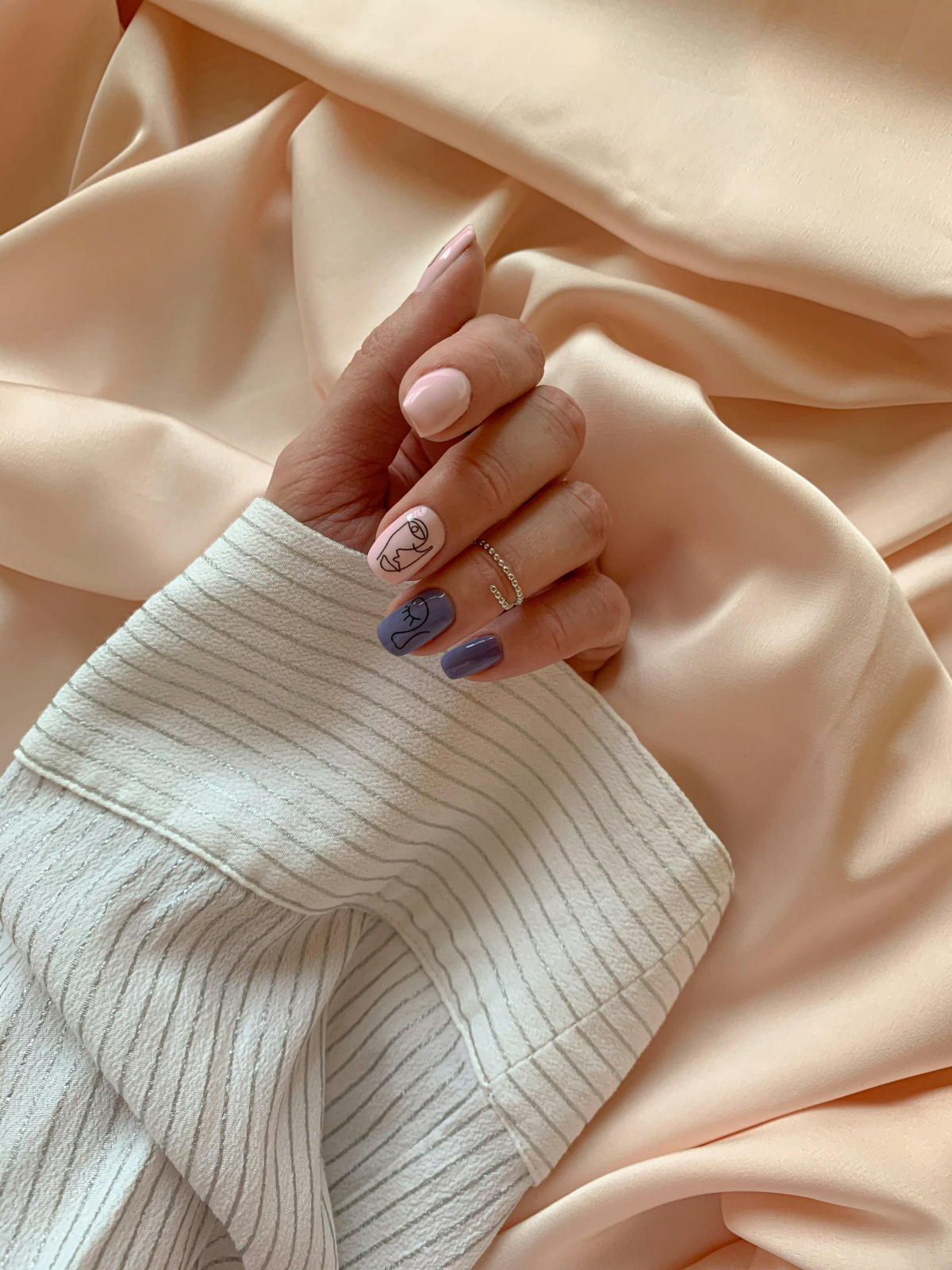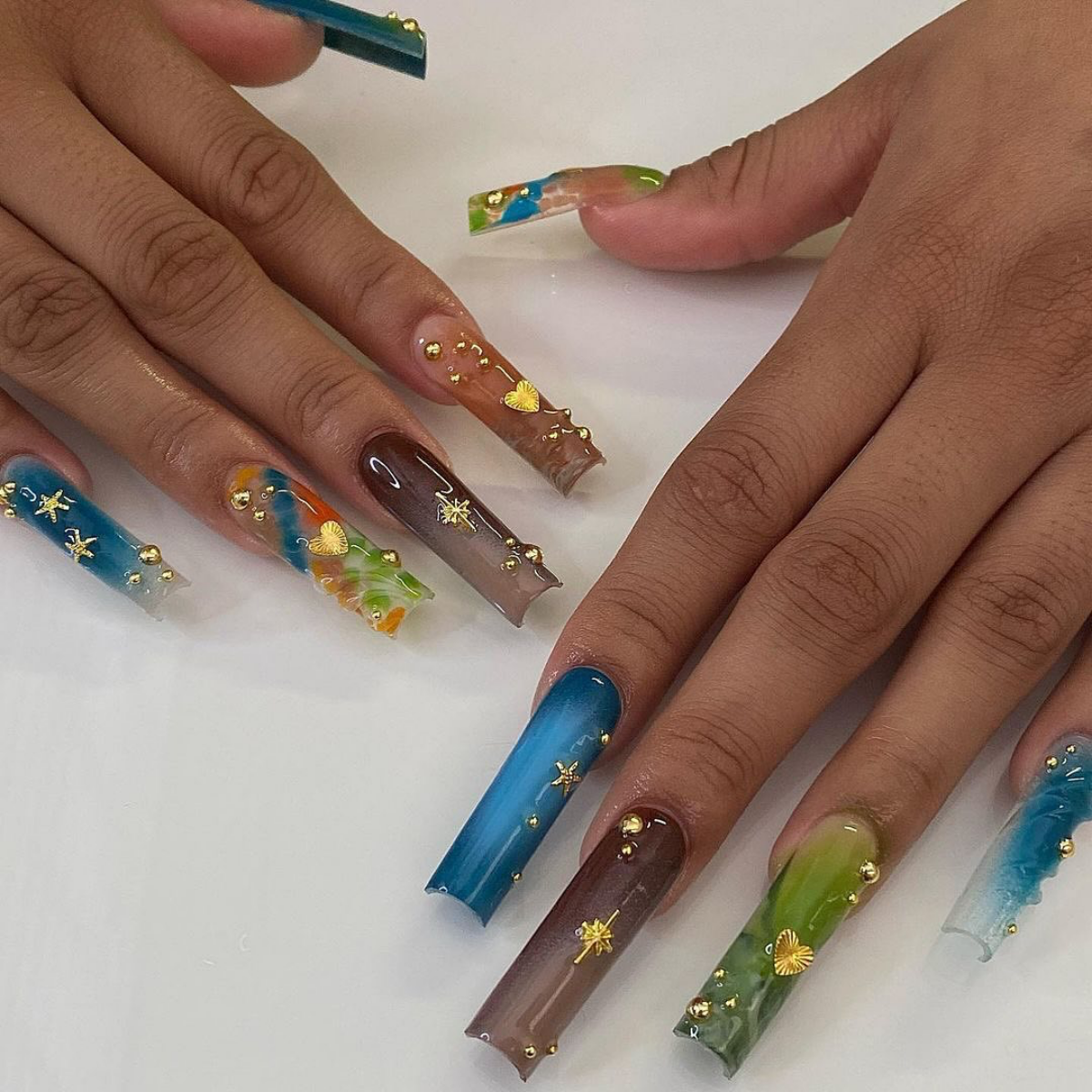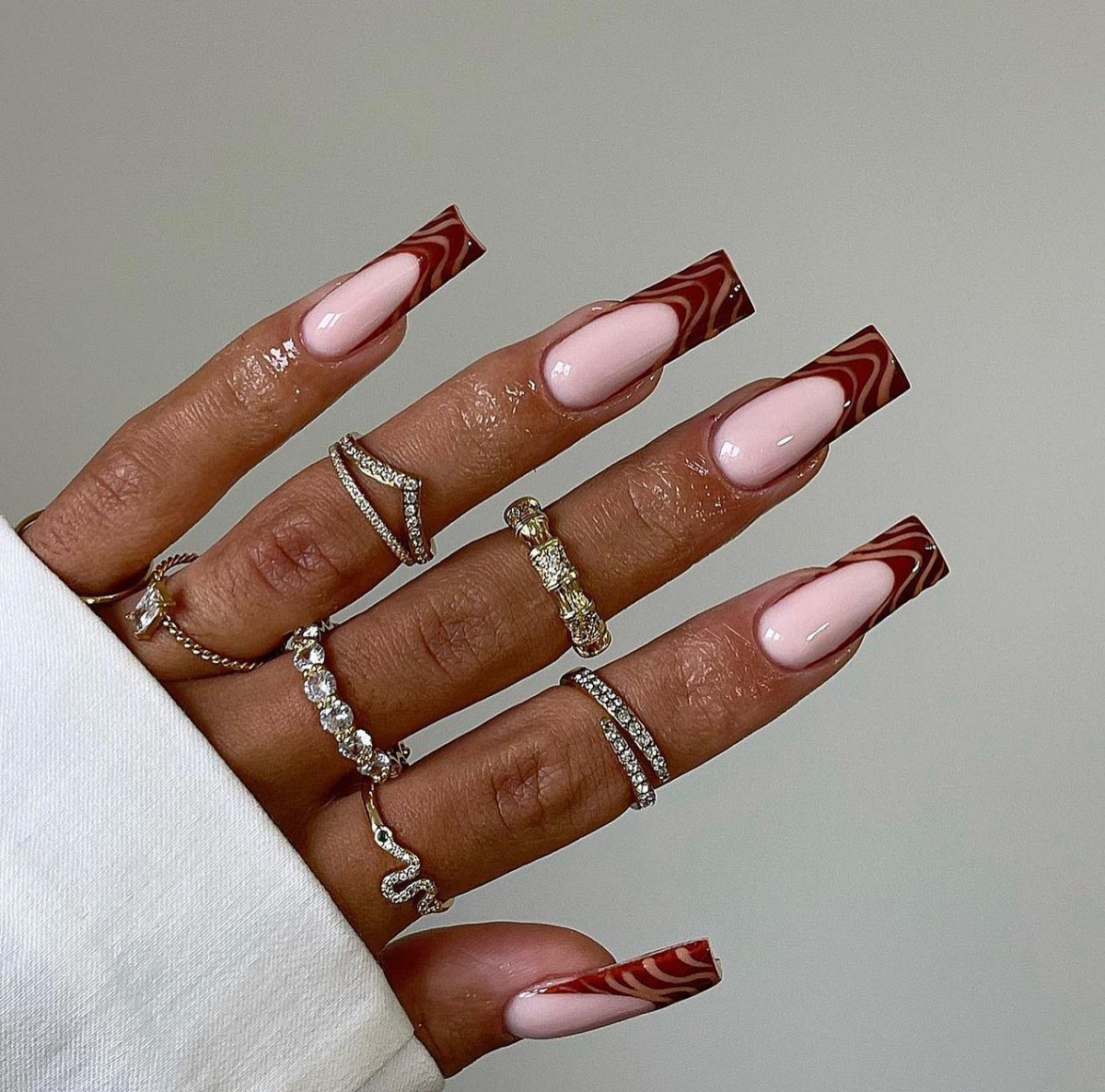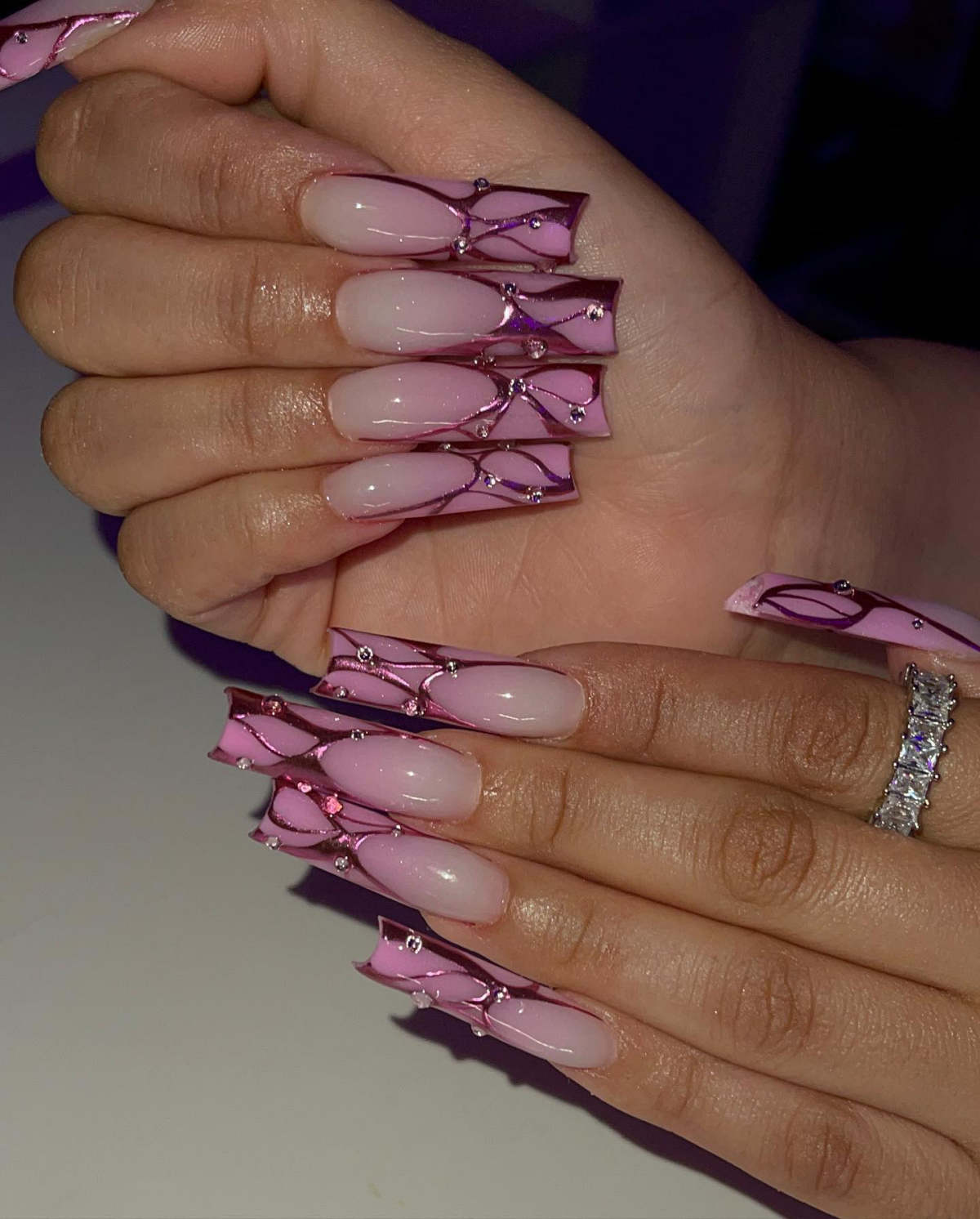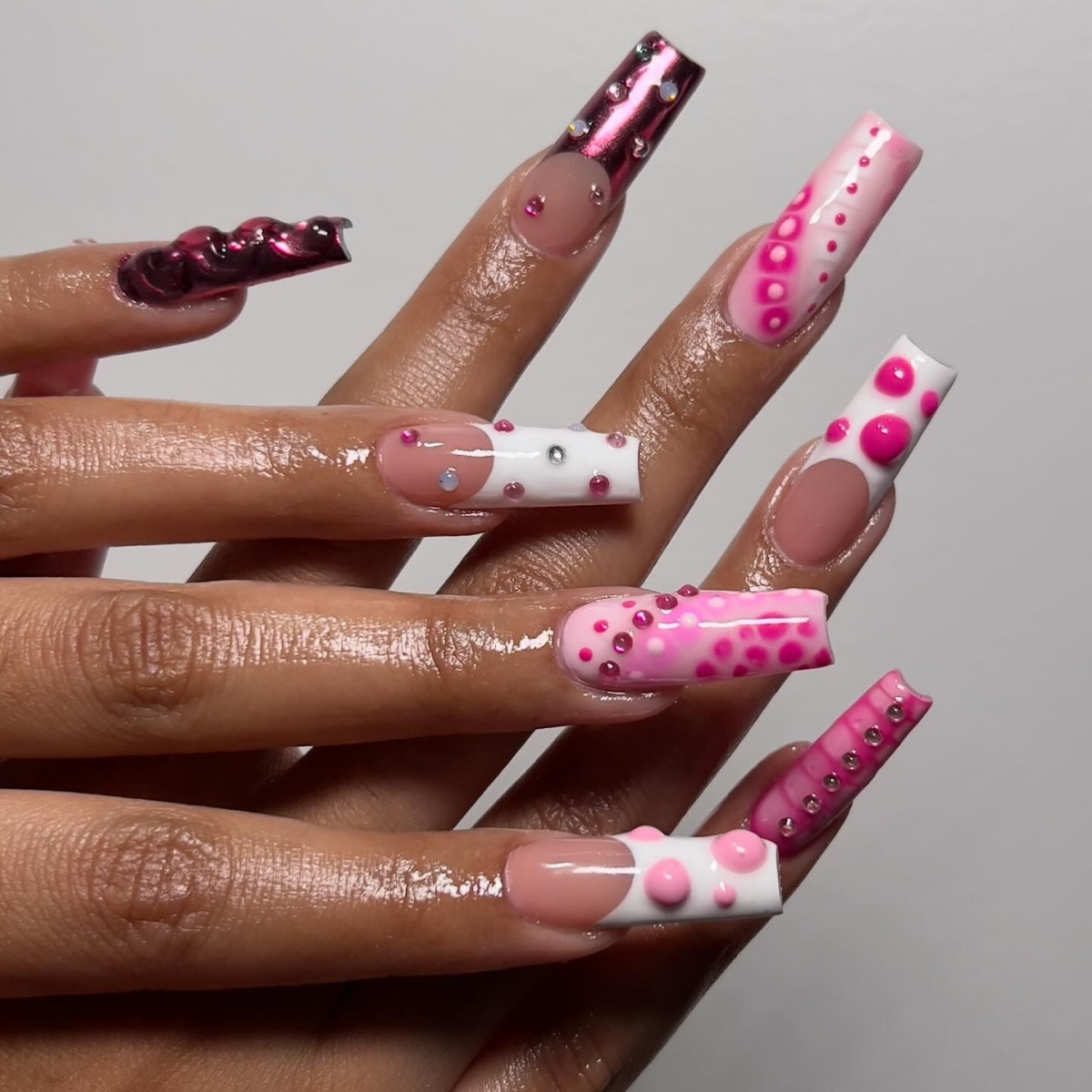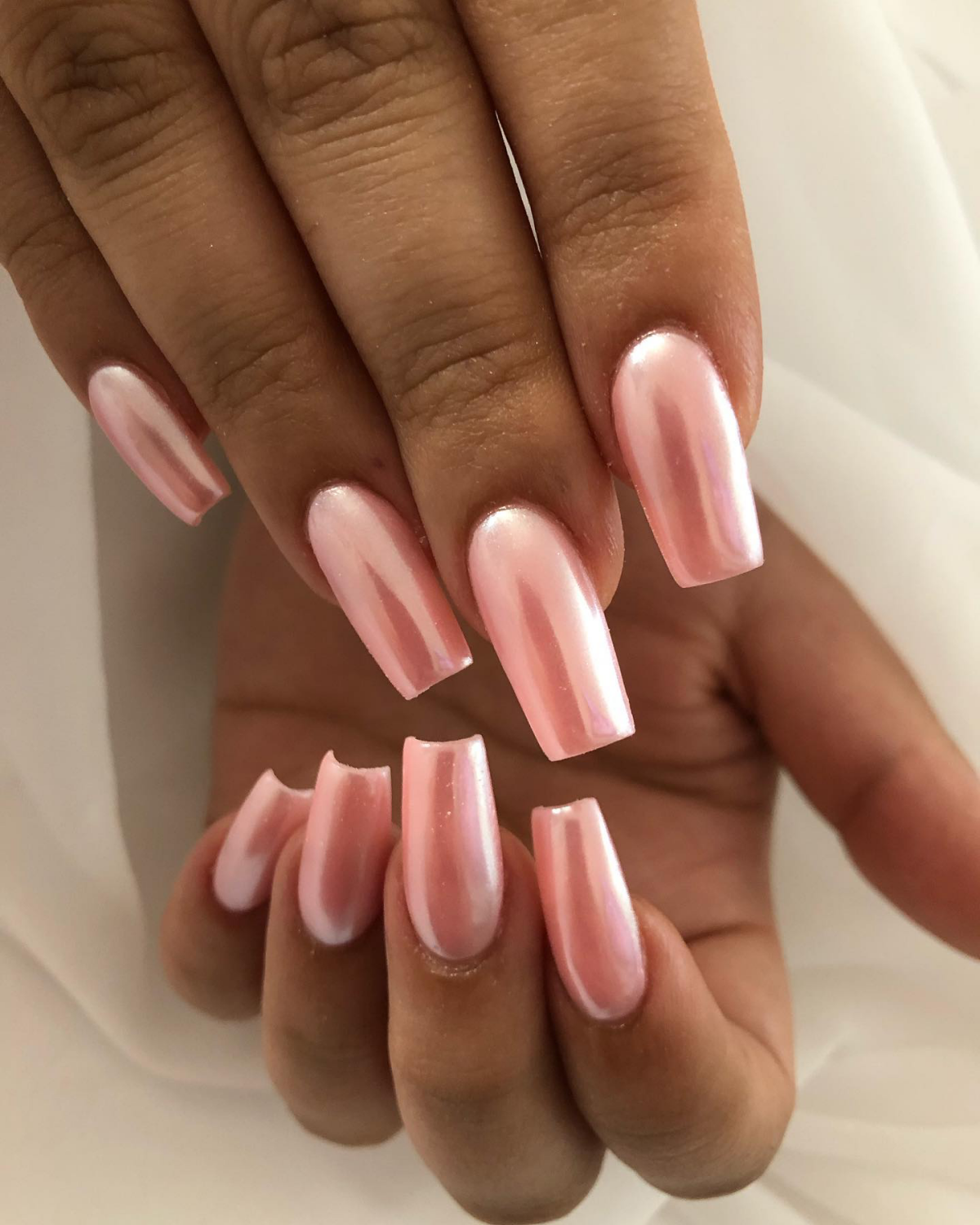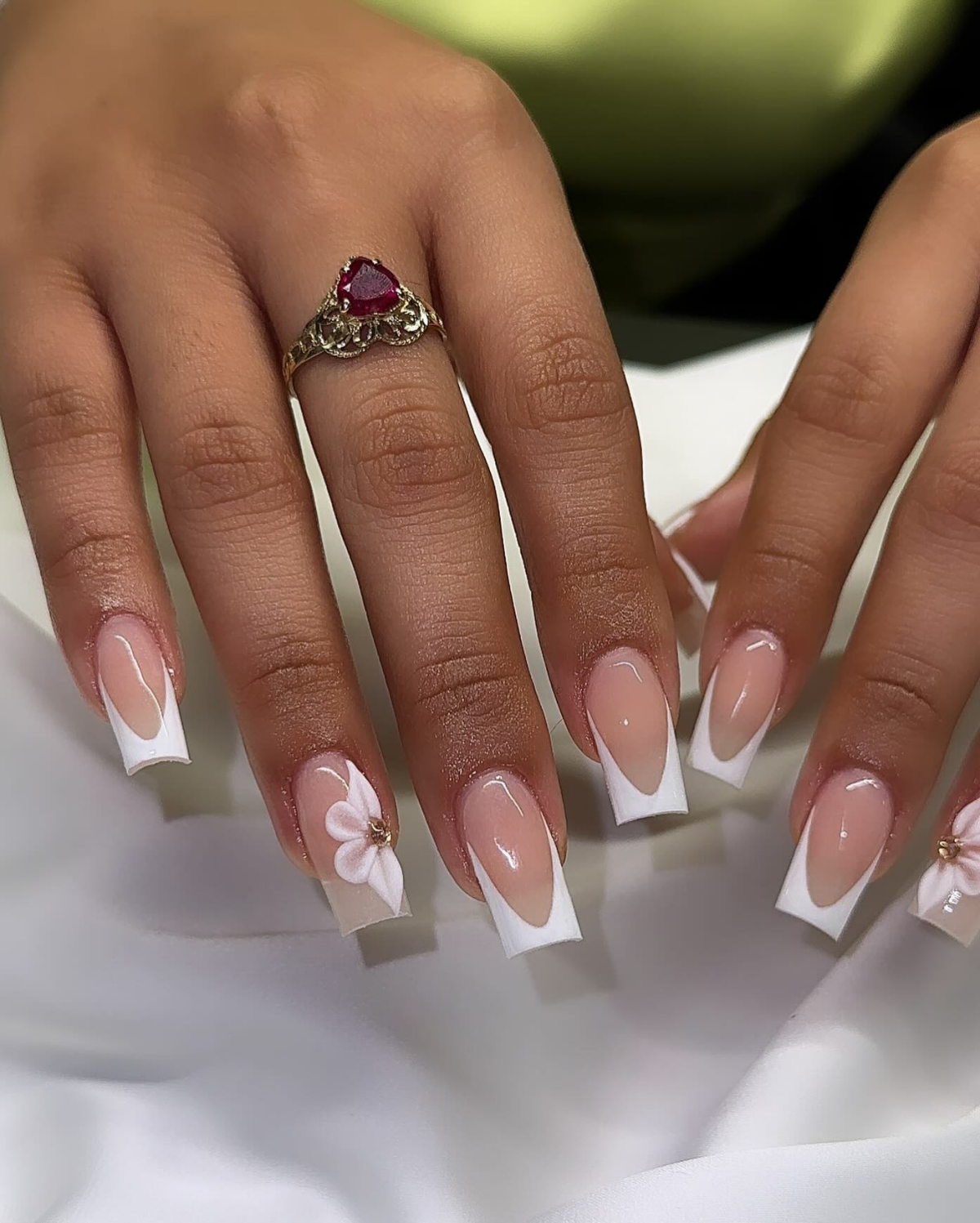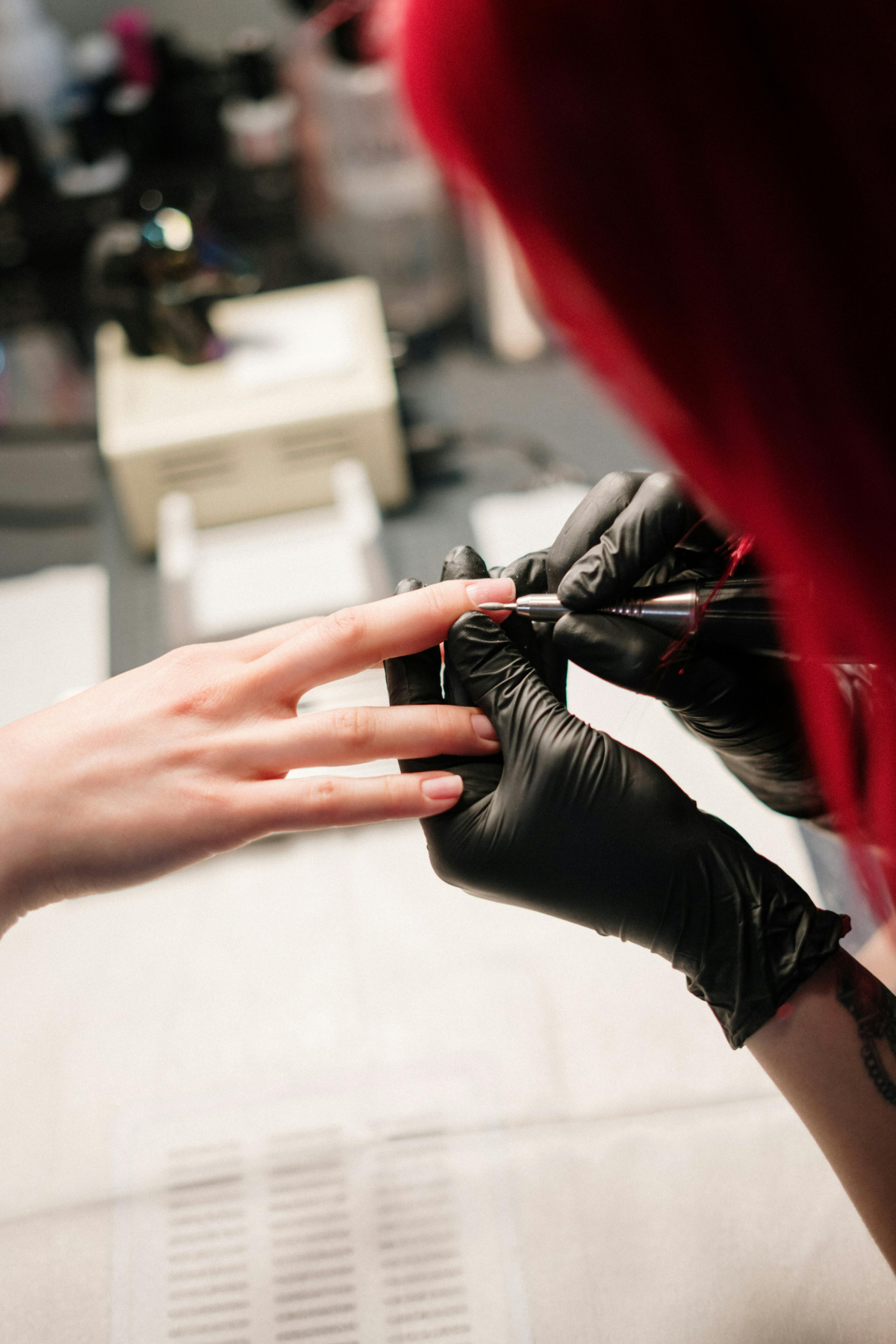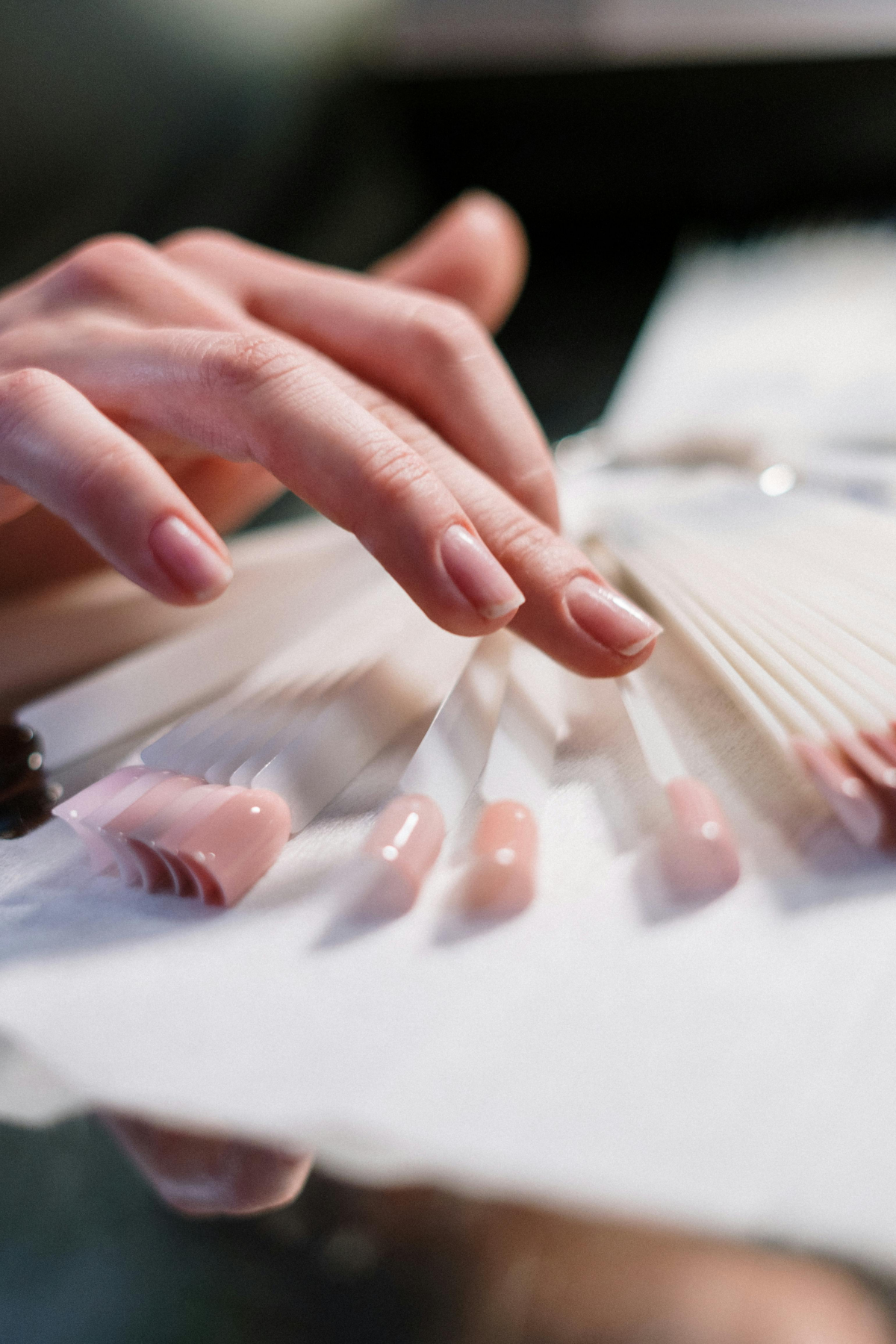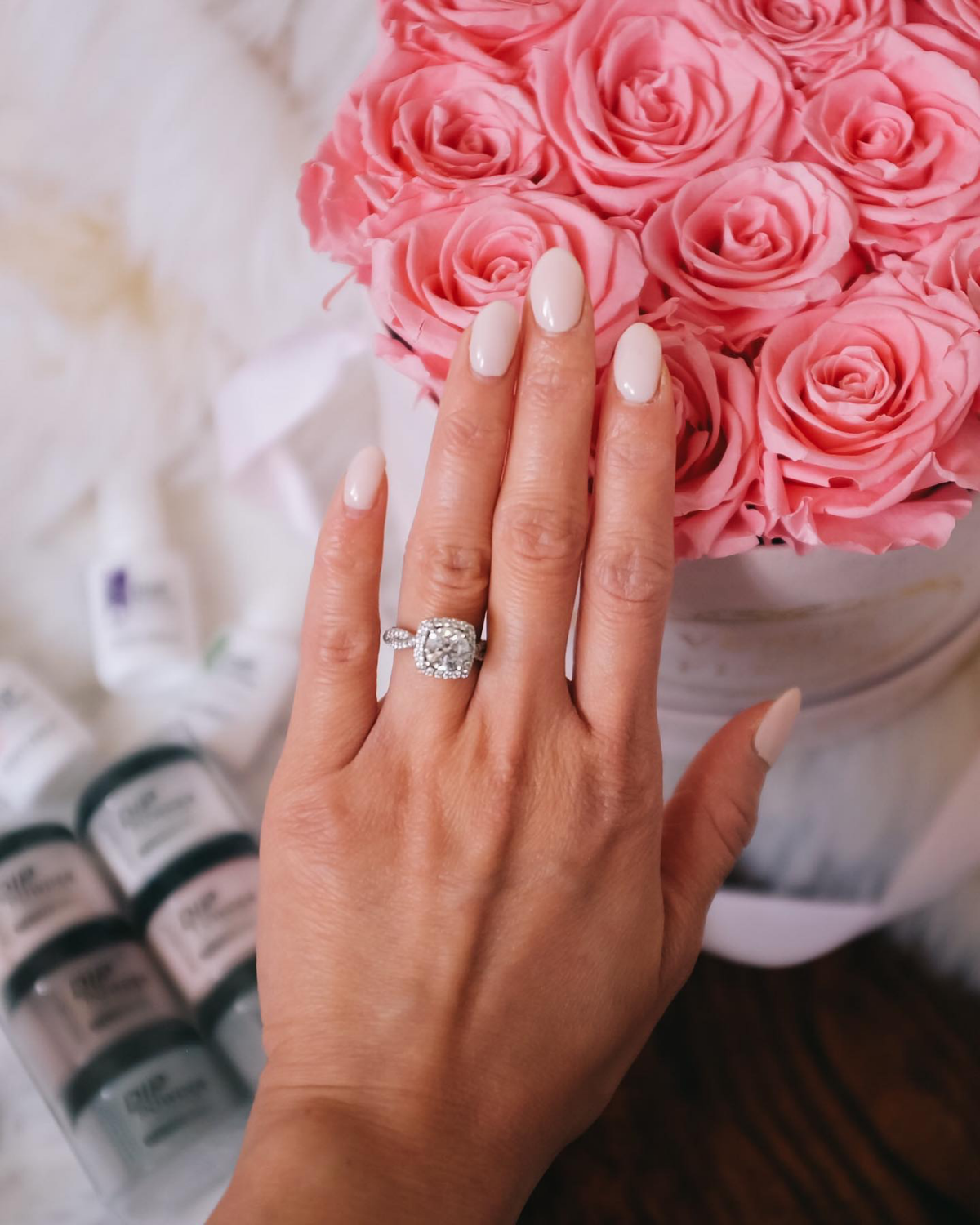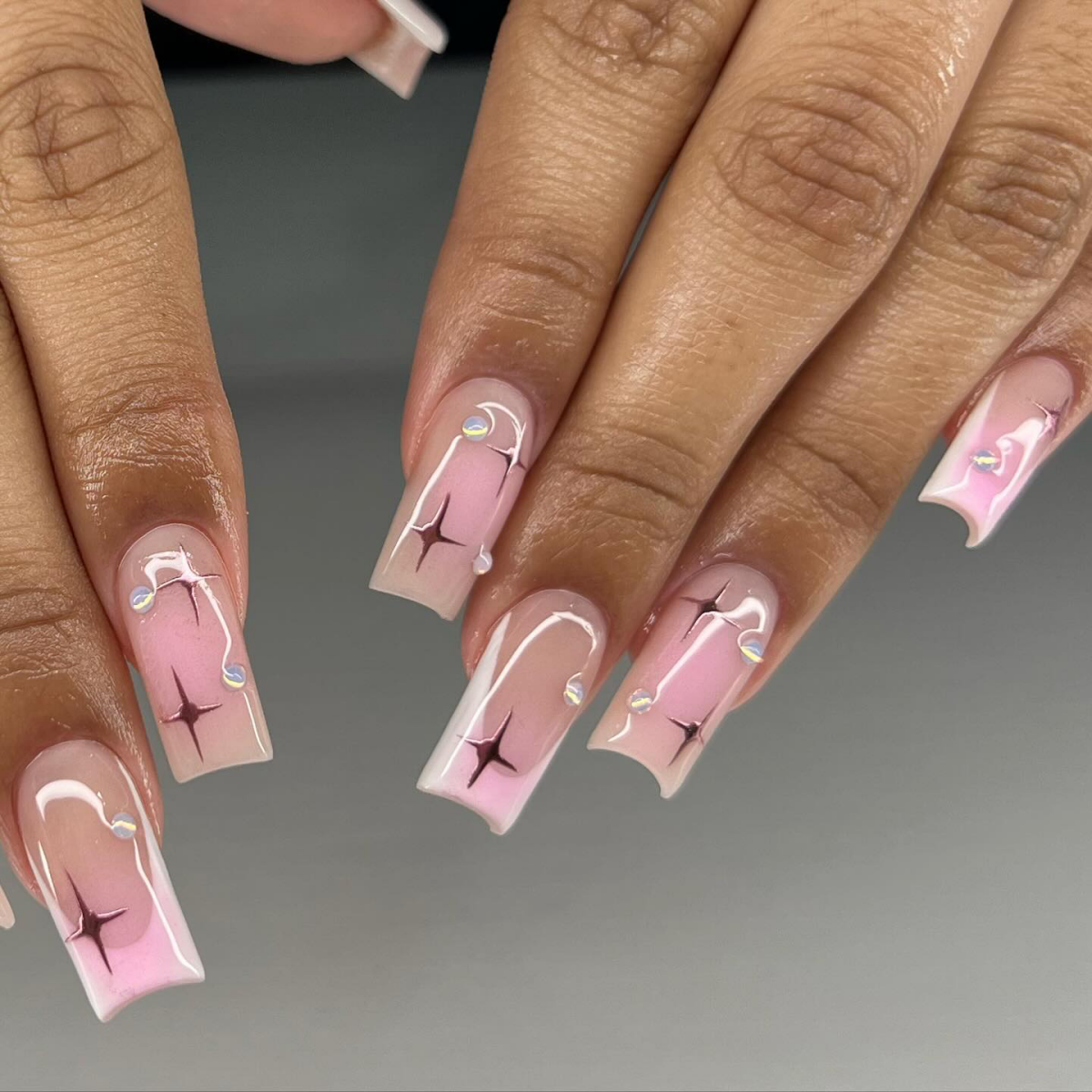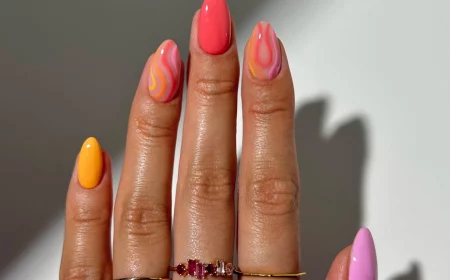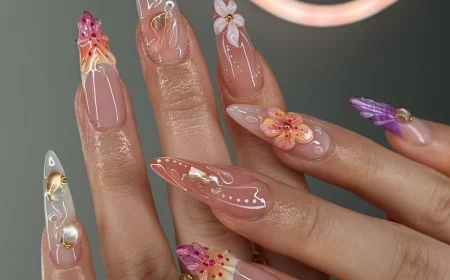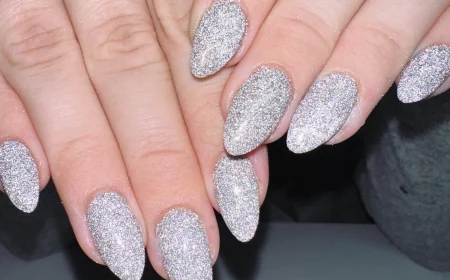Dip Vs. Acrylic Nails: Everything You Need To Know
The world of nail enhancements is vast and vibrant, filled with a dazzling array of options for those looking to express themselves through their manicure. The one thing I love about nails is that they offer endless possibilities for self-expression, which is something I hold in high regard. So, when faced with the decision between Dip and Acrylic nails, I understand the gravity of choosing the perfect method to bring your vision to life. That’s why I’ve scoured the deep depths of the internet and flipped through countless pages of magazines like Cosmopolitan, Glamour, and Allure to bring you the most comprehensive, enlightening guide on Dip vs. Acrylic nails.
Embark on a vibrant journey through the world of nail art
In this article
What Are Acrylic Nails?
Acrylic nails, the grand dames of nail enhancements, are a blend of powder and liquid monomer mixed into a dough-like consistency. This mixture is then sculpted onto the nails, air-dried, and polished to perfection. Acrylics are the go-to for those craving length, strength, and an artistic canvas for intricate designs. However, they demand regular upkeep and can be tough on your natural nails if not applied or removed correctly.
Acrylics: the grand canvas for those who dream in color and design
What Are Dip Powder Nails?
Dip Powder nails are the newer kids on the block, offering a less damaging alternative to traditional acrylics. The process involves applying a base coat, dipping nails into colored powder, and then sealing the deal with a top coat. This method promises a durable manicure without the need for UV light, making it a quicker, healthier option for your nails.
Dip into ease and health with powder nails
Dip vs. Acrylic Nails
Long before Instagram and Pinterest became the go-to sources for nail inspiration, people have been seeking ways to beautify their nails. From the ancient Egyptians to the glamorous women of the ’50s, nail enhancements have come a long way. Today, we’re spoiled with choice, but with so many options comes the need for clarity. As dermatologist Amy Kassouf, MD shares for Cleveland Clinic, each type needs a different process and has different effects on your nails and health. So, understanding the distinct advantages and limitations of Dip and Acrylic nails is crucial.
Nail enhancements are an age-old saga of style
Application
Acrylic nails are a traditional choice that requires a blend of liquid monomer and powder polymer. This mixture is then applied to the nails, sculpted, and allowed to harden. The process demands a significant level of skill and experience, primarily performed by professional nail technicians in salons. This complexity often makes it less accessible for those looking to do their nails at home.
Dip Powder nails, in contrast, simplify the application process. The method involves applying a base coat to the nail, dipping it into colored powder, and then sealing it with a top coat. This can be done with minimal tools and without the need for specialized ventilation systems, making it a more feasible option for at-home application. The key to success with Dip Powder is ensuring even application and avoiding contamination between uses.
Winner: Dip Powder for its user-friendly application.
Dip Powder wins for easy, breezy, beautiful nails
Durability and maintenance
Acrylic nails are renowned for their durability, capable of withstanding rigorous daily activities. However, this resilience comes with the need for regular maintenance. As the natural nail grows, gaps can appear, necessitating fills every two to three weeks to maintain the appearance and integrity of the acrylic overlay.
Dip Powder nails also offer impressive longevity, with many manicures lasting up to four weeks. While slightly easier to maintain due to their less complex fill process, Dip Powder nails may still require professional attention for optimal upkeep, especially to correct any lifting or chipping.
Winner: Acrylic for its unmatched durability.
Acrylics are the enduring icons of nail strength
Health and safety
The application of Acrylic nails involves chemicals that emit strong fumes, requiring proper ventilation to minimize inhalation risks. Additionally, the removal process, often involving soaking in acetone, can be drying and potentially damaging to the natural nails and cuticles if not done carefully.
Dip Powder nails are perceived as a healthier option primarily because they do not involve the same level of toxic fumes and can be easier to remove, reducing the potential for nail damage. However, hygiene is paramount to prevent bacterial or fungal infections, especially in a salon setting where products are used on multiple clients.
Winner: Dip Powder for its safer application and lower chemical exposure.
Dip Powder nails: a safer passage to beauty
Aesthetic and design options
Acrylic nails offer unparalleled versatility in design, from length and shape customization to the ability to embed colors, chrome designs, glitters, and even 3D art directly into the nail surface. This creative freedom allows for highly personalized and intricate nail art designs.
Dip Powder nails, while offering a wide variety of colors and finishes, are somewhat limited in the complexity of designs they can support. The nature of the dipping process makes it challenging to achieve the same level of detail and customization available with Acrylics.
Winner: Acrylic for its versatility in design and artistic potential.
Acrylics: where your nail fantasies come alive
Cost
The cost of getting Acrylic or Dip Powder nails can vary significantly depending on location, salon, and the complexity of the desired design. Generally, Acrylic nails tend to be more expensive due to the level of skill required for application and the time involved in both application and maintenance.
Dip Powder manicures might offer a more cost-effective option, with simpler application and maintenance procedures potentially translating to lower overall costs, especially for those who opt for at-home application.
Winner: Dip Powder for a more budget-friendly option without compromising quality.
Dip Powder nails: beauty on a budget
Lifestyle Considerations
Choosing the right nail enhancement often comes down to personal lifestyle and preferences. For active individuals or those with a hands-on lifestyle, Dip Powder nails might offer a practical solution with their straightforward application and maintenance, coupled with good durability.
On the other hand, Acrylic nails are suited for those who desire longer lengths, intricate designs, and are willing to invest in regular salon visits for maintenance. Their unmatched versatility and durability make them a favorite for fashion-forward individuals and those in professions where appearance is key.
Winner: Both
There’s a nail style that matches every rhythm
Tips to Make Your Manicure Last Longer
Achieving the perfect manicure is an art, but ensuring its longevity is a science. While Dip and Acrylic nails are inherently more durable than traditional nail polish, a few savvy practices can extend their lifespan even further.
- Use Protective Gloves: Whenever you’re engaging in activities that involve water or chemicals (like cleaning or gardening), protect your nails with gloves. This simple step can prevent premature chipping and wear.
- Opt for a Nail-Friendly Lifestyle: Choose a nail shape and length that suits your daily activities. For example, shorter, rounded nails are less likely to snag and break than longer, sharper ones, making them a practical choice for those with active lifestyles.
- Resist the Urge to Pick: Picking at your nail edges or the polish itself not only damages the manicure but can also weaken your natural nails. So, stop picking your nails! Keeping a nail file handy for any snags can help avoid the temptation to pick.
- Moisturize Regularly: Healthy nails start with hydration. Regularly applying cuticle oil and hand cream keeps your nails flexible and less prone to breakage, while also maintaining the skin around them.
- Maintain Cleanliness: For Acrylic nails, gentle cleaning with a soft brush can prevent dirt build-up and potential infections. Ensuring your nails and the area underneath are dry will fend off fungal growth.
- Stay on Schedule with Fills: To avoid lifting and potential water damage, schedule regular fill-ins for your Acrylic nails. Adhering to your nail technician’s recommended timeline can keep your nails looking seamless and intact.
- Select High-Quality Products: Whether it’s the nail polish, base, or top coat, opting for high-quality products can significantly impact the durability of your manicure. They’re formulated to last longer and resist chipping better than their cheaper counterparts.
Long live the manicure
Removal Process
Removing your manicure safely is crucial to maintaining the health and integrity of your natural nails. Both Dip and Acrylic nails offer beautiful, long-lasting results, but when the time comes to take them off, it’s essential to do so with care.
Acrylic
Acrylic nails are durable and long-lasting, but when it’s time for them to go, professional assistance is usually the best option. Attempting to remove Acrylic nails at home without the proper tools and knowledge can lead to damaged nail beds and weakened nails. Here’s the recommended process:
- Professional Removal: Seek the expertise of a nail technician. They have the tools and knowledge to remove the nails safely.
- Trimming and Buffing: The technician will start by cutting down the length of the Acrylics and buffing the surface to remove the glossy finish. This step helps the acetone penetrate the Acrylic more effectively.
- Acetone Soak: Your nails will then be soaked in 100% pure acetone. Acetone softens the Acrylic, making it easier to remove. Your hands may be wrapped in foil or placed in a bowl of acetone.
- Gentle Removal: Using a metal cuticle pusher or a similar tool, the softened Acrylic is gently pushed off. If any Acrylic remains, the process may be repeated.
- Hydration: After removal, it’s important to rehydrate your nails. The technician will likely apply cuticle oil and massage it into your nails and cuticles, followed by a gentle buff to restore shine.
Parting is such sweet sorrow
Dip
Dip Powder nails require a specific removal process to avoid damage to the natural nails. Like Acrylics, the safest bet is to have them removed professionally, but with the right care, removal at home is possible. Here is the method that proffesionals like NYC-based nail artist Evelyn Lim,manicurist and Powder Beauty Co. Salon founder Joy Terrell, and Varnish Lane’s Lauren Dunne recommended to Byrdie:
- Filing Down: The removal process begins with filing down the top layers of the Dip Powder. This step breaks the seal of the top coat and allows the acetone to work more efficiently.
- Acetone Soak: Nails are then soaked in acetone. You can wrap your nails in foil with acetone-soaked cotton balls or soak your fingertips in a bowl of acetone. The soaking time varies, but it generally takes about 10 to 20 minutes.
- Wiping Away the Dip: After soaking, the Dip Powder will start to loosen and can be wiped or gently scraped off with a cuticle pusher. If some product remains, a bit more soaking might be necessary.
- Nail Care Post-Removal: Following the removal, nails often need some TLC. Applying cuticle oil helps to rehydrate the nails and cuticles, and a light buff can help smooth any remaining roughness.
Gentle removal means happier nails tomorrow
Signs Your Nails Need a Break From Polish
Recognizing when to give your nails a hiatus from polish is essential for maintaining their health and vitality. Over time, continuous application of nail polish, especially when it involves stronger formulations used in Dip and Acrylic manicures, can lead to several noticeable signs of stress and damage to your nails. According to Dana Stern, a nail expert New York City based-dermatologist, in discussion with Allure, it’s vital to heed these signs to prevent long-term harm. Here are key indicators that it’s time to embrace a polish-free period:
- Discoloration: Persistent polish wear can leave nails with a yellowish tint, signaling it’s time to let them breathe.
- Brittleness and Breakage: If your nails have become more prone to snapping or peeling, they’re likely craving some rest.
- White Spots or Streaks: These can emerge from minor trauma to the nail or as a reaction to polish ingredients.
- Dryness and Peeling: Continuous polish use can strip nails of their natural moisture, leading to dry, peeling layers.
- Reduced Growth: Noticeably slower nail growth can be a sign that your nails are under stress and need a break.
Heed the signs of nail fatigue
Nail Aftercare
After removing either Acrylic or Dip Powder nails, giving your natural nails a break is beneficial. Look out for signs of stress such as rough patches, peeling, ridges, splitting, or discoloration. Treat them with nourishing oils or a hydrating nail treatment. Proper removal and post nail care ensure that your natural nails remain strong and healthy. So, let’s explore the essentials of nail aftercare, ensuring your nails not only recover but thrive, paving the way for even more stunning manicures in the future.
Embrace a rest period
Allowing your nails some downtime between manicures is more than a mere suggestion—it’s a necessity. This rest phase aids in the recovery from any potential stress or damage inflicted during the application or removal of nail enhancements. Consider this a well-deserved vacation for your nails, a time when they can breathe, regrow, and regain their natural strength.
Use a strengthening treatment
Your nails might emerge feeling a tad weary after being adorned with Acrylics or Dip Powders. This is the perfect time to introduce them to strengthening treatments. Many nail care brands offer restorative formulas designed to fortify the nail bed, encourage growth, and prevent breakage. Some salons provide specialized post-manicure treatments aimed at revitalizing your nails. This can be a worthwhile investment in your nail health journey.
Hydrate your nails
The importance of hydration cannot be overstated when it comes to nail aftercare. Regular application of cuticle oil not only moisturizes the cuticle and skin but also penetrates the nail bed. This provides essential nutrients and promoting flexibility. This prevents brittleness and breakage, common post-manicure woes. Make cuticle oil your nightly ritual, and your nails will thank you for the TLC.
Nourish from within
Believe it or not, the path to resilient nails doesn’t just lie in external treatments. It also involves nourishing your body from the inside out. Incorporating biotin-rich foods into your diet supports nail strength and health. As a delightful side effect of your nail aftercare regimen, foods rich in biotin and consistent hydration don’t just benefit your nails. They also contribute to healthier, faster-growing hair. Here are some superfoods to help your nails bounce back stronger:
- Avocado: Packed with healthy fats, vitamins, and minerals, avocados are a powerhouse for nail health.
- Eggs: A versatile source of protein and biotin, eggs support nail growth and repair.
- Almonds: These nuts are not only delicious but also rich in magnesium and biotin, promoting nail strength.
Aftercare is where nails rest and rejuvenate
Embarking on the journey of Dip vs. Acrylic nails reveals a world where beauty, health, and personal expression converge. The right choice is deeply personal, reflecting not just your style but your commitment to nail health and maintenance. With this guide, you’re equipped to make an informed decision that aligns with your unique sense of self-expression. After all, your nails are not just an accessory but a statement of who you are to the world.
This was the dip vs acrylic nails showdown
